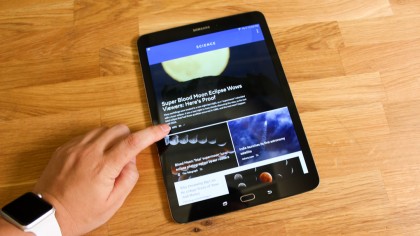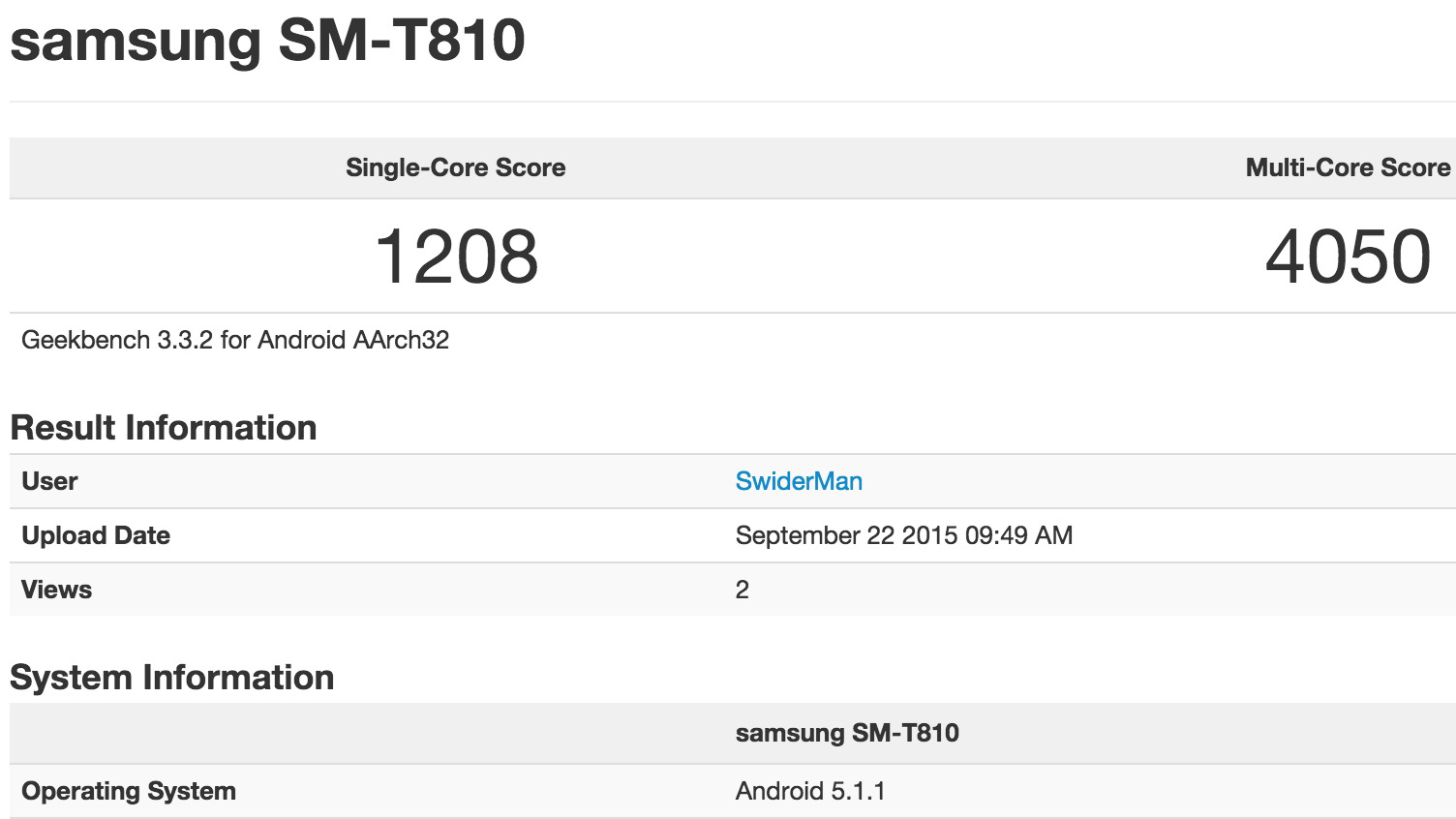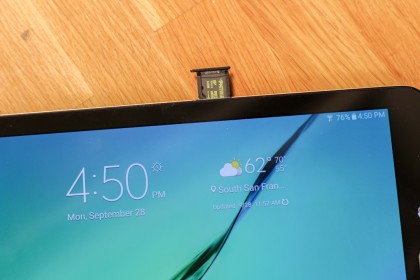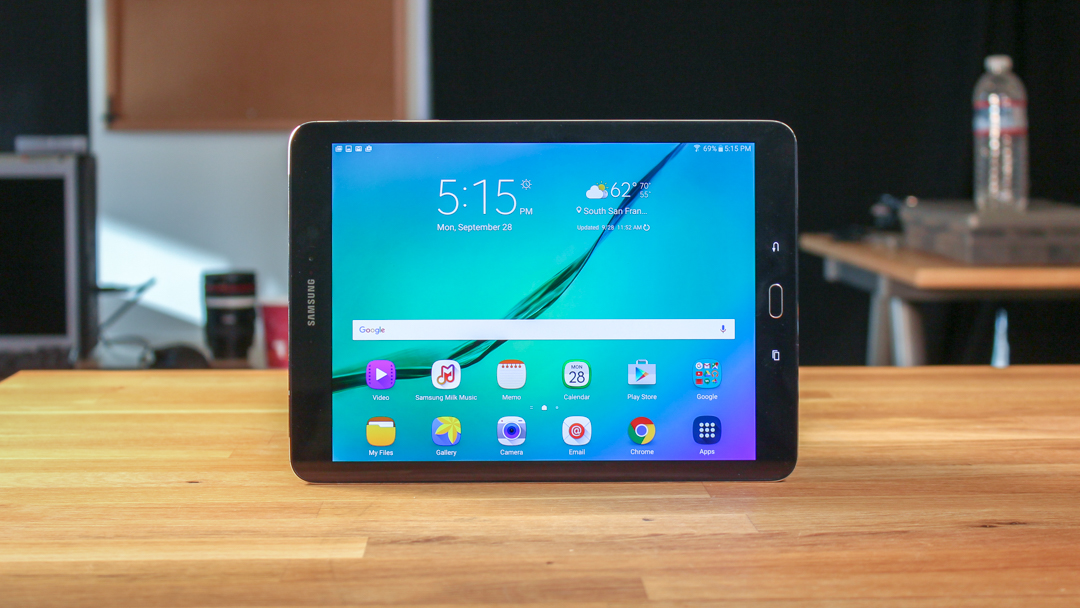Why you can trust TechRadar
The Samsung Galaxy Tab S2 takes some cues from the Galaxy S6 and Note 5 with a slimmer and lighter profile, but it doesn't quite inherit the same internal hardware.
At the heart of the tablet duo is Samsung's Exynos 7 5433 octa-core system-on-a-chip that combines another 1.9GHz quad-core processor with a 1.3GHz quad-core processor.
Clock speeds are the same as the previous generation Galaxy Tab S, and don't reach the performance levels of its contemporary Galaxy S6 and Note 5 devices, but the ARM-based cores did get an upgrade.

The same applies to the graphics chip and RAM found inside the Galaxy Tab S2. It has a Mali T760MP6 GPU that was new to the Samsung tablet line, but was still a step behind the Samsung phones of the time. The RAM remains 3GB of LPDDR3, compared to the 4GB of LPDDR4 RAM the Note 5 had.
Galaxy Tab S2: performance
The Samsung Galaxy Tab S2 showed performance gains over the tablets that came before, but its benchmarks trail the iPad Air 2. Running Android 5.0.2 to begin with, its Geekbench 3 scores averaged a healthy 4,077.
That means in 2015 it slotted itself right in between Google's Nexus 9 tablet with a score of 3,492, and Apple's iPad Air 2 with a tablet-defining score of 4,506.

What's interesting is that, while Samsung is a bit clock-speed-shy with its tablet chipsets, Apple in contrast goes all out with its iPads. The first iPad Pro, for instance, has its highest-end A9X chip.
Compared to the other devices around when the Tab S2 launched, the Galaxy S6 and Galaxy Note 5 were topping the charts, while the likes of the iPhone 6S and iPhone 6S Plus were lagging slightly behind.
The good news is that the Galaxy Tab S2 remains a relatively snappy performer when TouchWiz doesn't bog down the interface, and the operating system consistently stays out of the way.

Samsung Galaxy Tab S2: internal storage
Better yet, Samsung makes a fair trade-off with the internal storage specs. Back when it launched, all of Apple's devices begin with 16GB of storage, while Samsung phones and tablets began with 32GB.
That's more important to many file-hoarding consumers who have gigabytes worth of music, photos and apps stored locally, than a tablet that ekes out a win when it comes to processor performance under pressure.
Current page: Specs and performance
Prev Page Introduction, design and display Next Page Interface and apps
